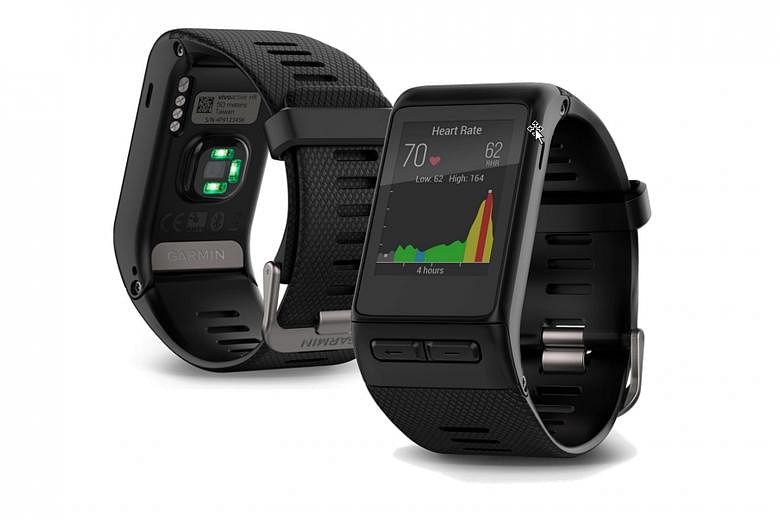Garmin labels its new Vivoactive HR as a GPS smartwatch.
But I think of it more as a fitness tracker with a big display that is a running watch and smartwatch rolled into one.
With its built-in GPS, you can run or bike without needing a smartphone connection for GPS tracking. It is water-resistant down to 50m, so you can swim with it. In fact, it can track your swims as well.
It is also a smartwatch, as it displays notifications you receive on your paired smartphone. You have the option to include which notifications, such as messages, social media or e-mail, to be displayed.
As a fitness tracker, it monitors your all-day physical activities as well as your sleep. Plus, it has a built-in heart-rate sensor for all-day heart-rate monitoring as well as tracking your exercise intensity.
Looks wise, the Vivoactive HR is as plain as it gets.
-
TECH SPECS
PRICE: $389
MATERIAL: Plastic case with rubber wristband
CONNECTIVITY: Bluetooth
WEIGHT: 48g
RATING
FEATURES: 4/5
DESIGN: 3/5
PERFORMANCE: 4/5
BATTERY LIFE: 4/5
VALUE FOR MONEY: 3/5
OVERALL: 4/5
It has a rectangular colour touchscreen display (205 x 148 pixels) with a rubber wristband.
I find the display a little dim, especially during the default power saving mode. You can flick your wrist to activate the backlight. But even at the highest brightness settings, the display is still not bright enough for my liking.
By default, the watch shows the time and date. Swiping the display up or down toggles through panels showing calendar, weather, heart rate summary and notifications.
There are two buttons below the display. The left button works as the back button, while the right button gives you access to a panel to choose workouts from, such as run, bike and pool swim. Pressing and holding the right button brings you to the main menu to change watch faces and settings.
The step-tracking function proved to be very generous. The Vivoactive HR counted up to 15 per cent more steps than my calibrated Fitbit Charge HR.
Sleep tracking is automatic and consistent, although it seems to like adding an hour or two to my sleep each night.
Securing a GPS lock in open space takes around 20sec. Tracking of runs was spot-on and did not differ much, in terms of distance tracked, when compared with my calibrated TomTom Spark Cardio running watch.
In terms of heart-rate monitoring, the readings I got were almost identical to those of the Charge HR and Spark Cardio.
Like most fitness watches with optical heart-rate monitor, the Vivoactive HR cannot track heart rate during swims. Before starting the swim, you need to specify the length of the pool. It was able to accurately track the number of laps I swam, even when I paused between laps to catch my breath.
Battery life is around eight days, with all-day heart-rate tracking activated. It should last up to 13hr with GPS constantly on.
I did not try running for 13hr. But the Vivoactive HR had 50 per cent juice in four days of normal daily activity without any run or swim workouts, before the paranoid me charged it again.
•Verdict: If you do not mind its plain looks, the Garmin Vivoactive HR is a jack-of-all-trades watch that you would not mind mastering.


